Product Overview
A Flathead Catfish trophy fish mount from Gray Taxidermy is handcrafted in the U.S. We combine over fifty years of experience and skilled craftsmanship to ensure that your custom trophy mount exceeds your expectations of what a perfect custom fish mount should look like.
Our skilled artists take pride in capturing the rich beauty and realism of nature that each unique marine species bring. A fish mount from Gray Taxidermy will capture and commemorate a memory of a life time. We are able to transform raw materials into the ultimate representation of an angler's most notable achievement. Great attention to detail and true craftsmanship is our motto while we continue to serve customers around the world. Gray Taxidermy goes to great lengths to ensure the precise color and characteristics are resembled in your custom fish mount.
Before leaving our facility, each custom fish mount is thoroughly inspected to ensure our goal of 100% customer satisfaction.
Product Specs:
- Available Sizes: Call for information
- Details: Fired-Enamel Glass Eye
- Product Options: Wood Plaque, Custom Base, 360°
-
We also offer elegant solid wood plaques to accompany yor trophy mount. Includes traditional wood plaque with sublimated personalized information. Just ask for more information.
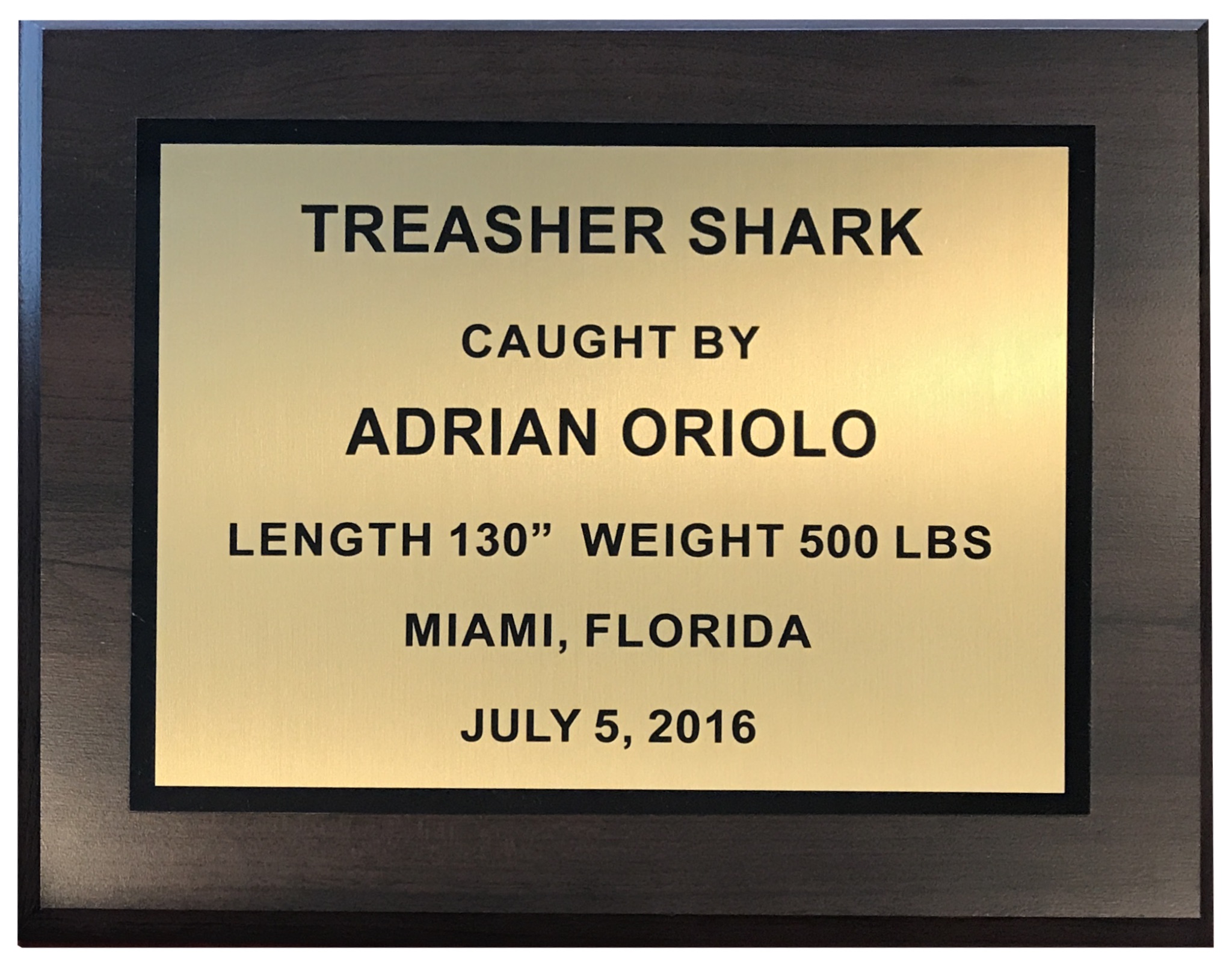
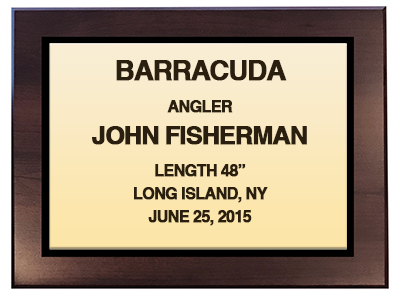 15 in x 12 in or 10 in x 8 in personalized wood plaque.
15 in x 12 in or 10 in x 8 in personalized wood plaque.
Color: Gold
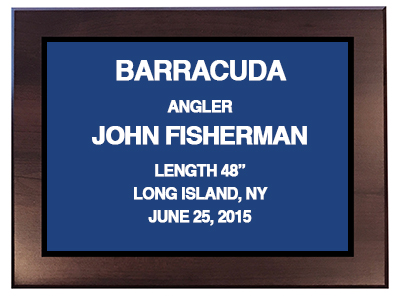 15 in x 12 in or 10 in x 8 in personalized wood plaque.
15 in x 12 in or 10 in x 8 in personalized wood plaque.
Color: Blue
Species Information
Scientific Name: Pylodictis olivaris
Average Size: 90 - 123 lbs.
Location & Habitat: Flathead catfish are native to rivers and lakes in the lower Great Lakes and Mississippi River basin. They are found in appropriate habitat in Texas, Louisiana, Arkansas, Oklahoma, Missouri, Kansas, much of Nebraska, South Dakota, North Dakota, Iowa, Minnesota, Illinois, Indiana, Ohio, Kentucky, western Virginia, Tennessee, Alabama, and as far south as Mexico. This species has been introduced farther east and west of its native range, to parts of Washington, Oregon, California, Arizona, New Mexico, Wyoming, Colorado, Georgia, South Carolina, North Carolina, Virginia, and Pennsylvania. Flathead catfish live in rivers, lakes, and reservoirs with slow currents.
Younger individuals prefer shallower water. Older and larger flathead catfish stay in deeper waters during the daylight hours, and move into shallower water at night. They remain near or under cover, including fallen trees, logs, brush piles, and river banks. A log that is 5 m long is large enough to provide enough cover for one large adult flathead catfish.
Description: This is a large-bodied species that can grow to sizes over one meter in length and 56 kg in weight. Flathead catfish are also called mud catfish, because of their yellow to purple brown dorsal coloration. The belly is pale white to yellow. Their head is wider and flatter than that of other North American catfishes. The lower jaw protrudes farther out than the upper jaw, with the mouth having a wide oval shape. The caudal fin has rounded to slightly notched posterior margin, and a white tip on the upper lobe which can be used to distinguish this species from other members of the family Ictaluridae. Flathead catfish have both pectoral and dorsal fin spines. The anal fin is short and rounded in profile, and contains 14 -17 elements. There is no physical difference between males and females.
The flathead catfish spawns in summer when the water reaches 72 to 75 degrees. It nests in hollow logs, root wads or log jams in quiet water. After spawning, the male drives the female from the nest - violently if necessary. The male guards the eggs and fans water over them until they hatch and may tend the swarm of young until they disperse.Though the flathead tolerates turbidity and temperatures in the low 90's, it requires reliable flows of well-oxygenated water. During the winter, flatheads seek deep waters, where boulders or logs provide refuge from current. There they remain through the winter, so torpid that they may be covered by a fine dusting of silt.

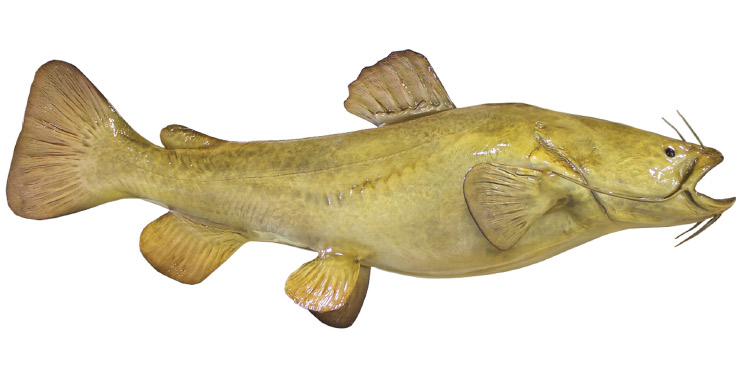
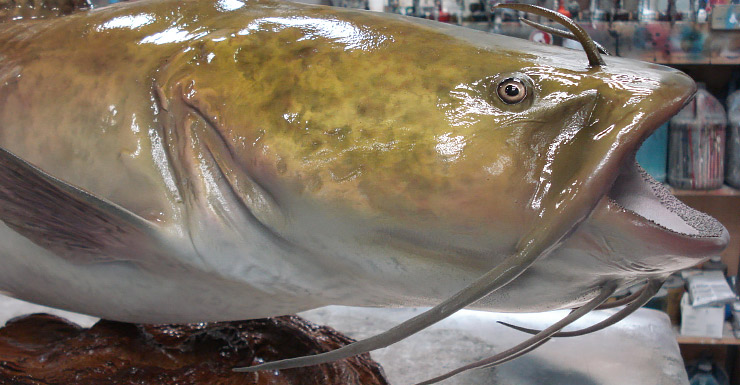
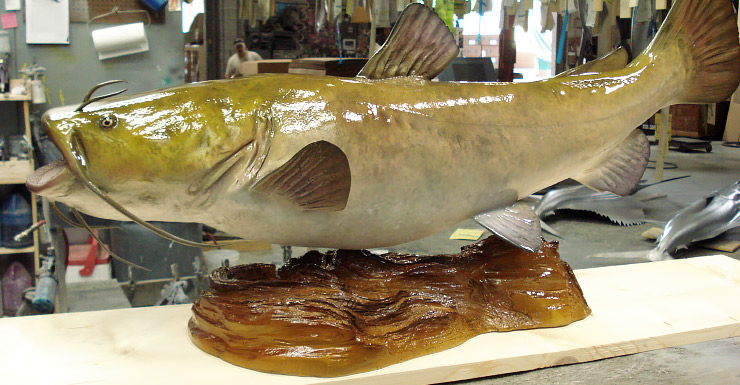

Call Now: 800.452.5501